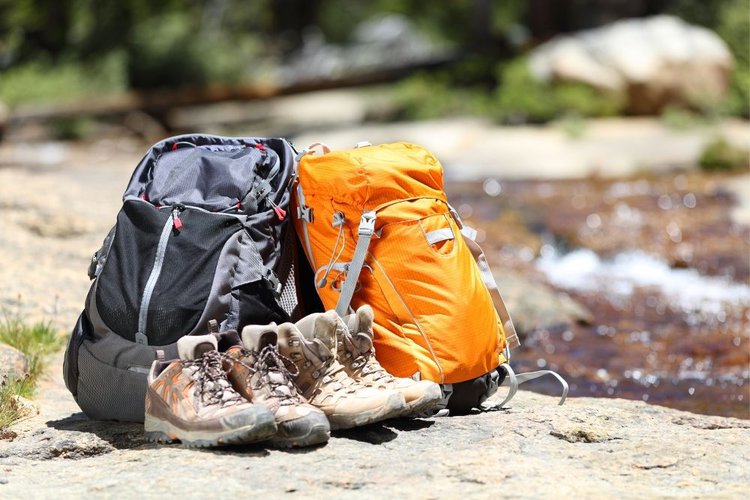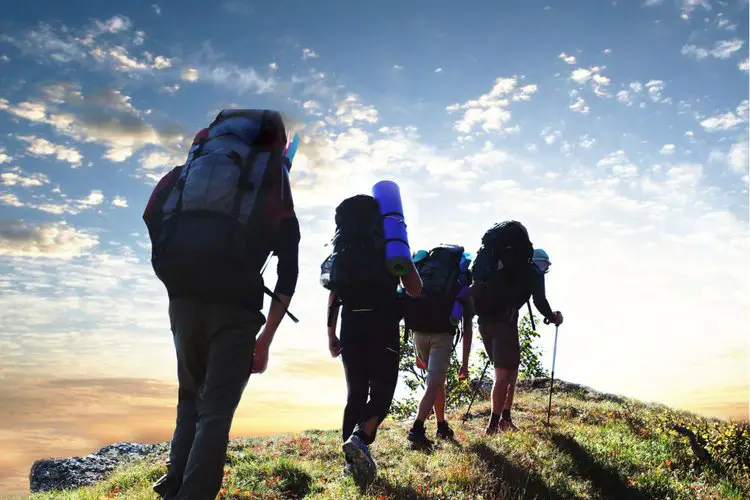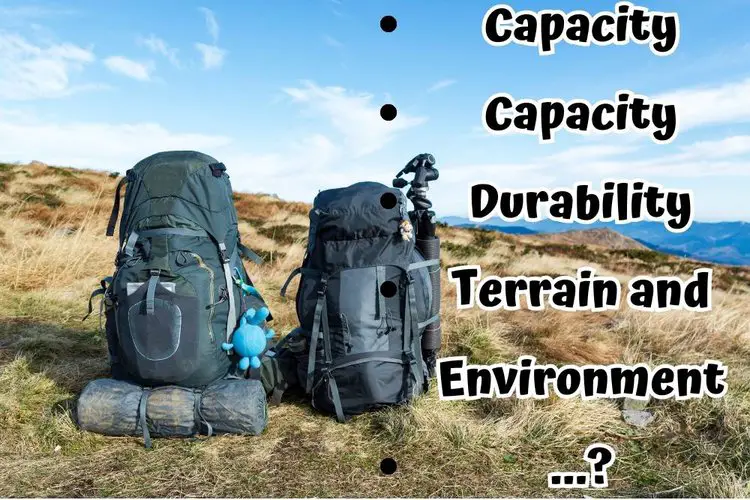Lena was a novice hiker who decided to take a weekend trip with her friends to the nearby national park. She was excited to explore the beautiful trails and scenery, but she didn’t know much about hiking gear.
She went to a store and picked out a backpack that looked stylish and had some pockets, but didn’t pay much attention to the features that would be important for her trip.
On the first day of the hike, Lena realized that she had made a mistake. Her backpack was uncomfortable and didn’t fit well, causing her shoulders and hips to ache.
The backpack was also too small to fit all of her gear, and she had to carry some stuff in her hands, which made the hike much more difficult.
Finally, it started raining, and Lena discovered that her backpack was not waterproof, and all of her gear got wet.
Lena realized that it’s crucial to choose a backpack that’s suitable for the hiking purpose and has the right features for the terrain, environment, and weather conditions.
She also learned that it’s important to try on the backpack and adjust it to fit comfortably before the trip. Finally, Lena learned that it’s essential to choose a waterproof backpack or carry a rain cover to protect her gear from getting wet.

Contents
What to look for in a hiking backpack?
One of the most common mistakes that hikers make is choosing a backpack that doesn’t fit well or is too small or too large for the trip.
It’s also important to avoid choosing a backpack based solely on its appearance or brand name, as this can lead to choosing a backpack that’s not suitable for hiking purposes.
Capacity
The first thing to consider when choosing a hiking backpack is its capacity. This is determined by the volume of the bag, measured in liters.
A backpack’s capacity depends on how much gear you plan to carry, how long your hike is, and whether you will be camping overnight.
For day hikes, a backpack with a capacity of 20-30 liters should be sufficient. If you plan to camp overnight, you will need a larger backpack with a capacity of 40-60 liters.
Keep in mind that the larger the backpack, the heavier it will be.
Last update on 2023-11-11 / Affiliate links / Images from Amazon Product Advertising API
Fit and Comfort
A well-fitted backpack is crucial for comfort and safety on a hike. A backpack that doesn’t fit properly can cause discomfort, chafing, and even injury.
When choosing a hiking backpack, make sure to consider the following:
- Torso length: Measure your torso length to determine the right backpack size. Most manufacturers provide sizing charts to help you find the right fit.
- Hip belt: The hip belt should sit on your hip bones and transfer most of the weight to your hips rather than your shoulders.
- Shoulder straps: The shoulder straps should be padded and comfortable, without digging into your skin.
- Load lifters: Load lifters are straps that attach to the top of the backpack and pull the weight closer to your body, improving balance and comfort.
Durability
Hiking backpacks are exposed to rough terrain, rain, and sun, so they need to be durable.
Look for backpacks made of high-quality materials that can withstand wear and tear, such as nylon or polyester.
The backpack should also have reinforced stitching and heavy-duty zippers.
Compartments and Pockets
The number and type of compartments and pockets in a backpack can make a big difference in your hiking experience.
A backpack with multiple compartments can help organize your gear and keep it easily accessible.
Pockets on the exterior can be used for storing items like water bottles, snacks, and maps.

Weight
A heavy backpack can make your hike uncomfortable and tiring, especially if you have to carry it for a long distance.
Go for a backpack that is lightweight but still durable and spacious enough to carry your gear.
Ventilation
Look for backpacks with breathable mesh panels on the back or shoulder straps to promote air circulation and reduce sweating.
Find a hiking backpack based on the hikers’ needs
Another common mistake is not considering the weather conditions and choosing a backpack that’s not waterproof or doesn’t have the necessary features for hiking in rain, snow, or hot weather.
Here are some examples of hiking backpack features to consider based on different hiking types, terrains, environments, and weather conditions:
Day Hikes
For day hikes, a smaller backpack with a capacity of 20-30 liters is usually sufficient.
Look for a backpack with a comfortable and well-ventilated back panel, padded and adjustable shoulder straps, and multiple pockets for easy organization.
A backpack with a hydration system is ideal if you’re hiking in warm weather.
A hip belt is not as necessary for a daypack as it would be for an overnight or multi-day backpack, but it can help to keep the backpack stable on your back.
- 【0.5 POUNDS OF PORTABLE ULTRA LIGHTWEIGHT PACKABLE BACKPACK】The size of the travel backpack...
- 【20L ULTRA LIGHTWEIGHT FOLDABLE BACKPACK】Our packable hiking backpack water resistant capacity...
- 【QUALITY ULTRA LIGHTWEIGHT PACKABLE BACKPACKS】Our ultralight foldable backpack are nylon...
Last update on 2023-11-11 / Affiliate links / Images from Amazon Product Advertising API
Overnight Trips
For overnight trips, a backpack with a capacity of 35-60 liters is recommended, depending on the length of your trip and the gear you’ll need to carry.
You should choose a backpack with a sturdy frame, comfortable hip belt and shoulder straps, and compression straps to stabilize your load.
A rain cover is a valuable addition if you plan on hiking in wet weather. A backpack with a separate compartment for your sleeping bag is also useful.
- High-Quality Material:Maelstrom hiking backpack is made of high quality rip-stop 210d nylon...
- Ergonomic and Comfortable Design:Thick breathable padded back and shoulders make you comfortable and...
- Large Capacity & Multi Compartment: Maelstrom hiking daypack provides several pockets for handy...
Last update on 2023-11-11 / Affiliate links / Images from Amazon Product Advertising API
Multi-Day Treks
For multi-day treks, a backpack with a capacity of 60-80 liters is necessary to accommodate all the gear you’ll need.
Go for a backpack with a well-designed suspension system, including adjustable shoulder straps, a hip belt, and a ventilated back panel for maximum comfort.
A backpack with a detachable top lid is useful if you want to do side trips from your base camp.
A backpack with multiple pockets and compartments will help you keep organized and access gear easily.
- Comfortable Daypack: This climbing backpack is specially designed for traveling enthusiasts,...
- LARGE CAPACITY & MULTI COMPARTMENTS:Spacious main compartment and numerous pouches with large...
- With 8 ADJUSTABLE STRAPS:for tying up your pack or hanging sleeping bag, mat, hammock, tripod, and...
Last update on 2023-11-11 / Affiliate links / Images from Amazon Product Advertising API
Terrain and Environment
If you plan on hiking through rugged terrain or in wet conditions, it’s better to choose a backpack with a sturdy frame, durable and water-resistant materials, and multiple compartments to store wet gear.
A backpack with a separate bottom compartment for your sleeping bag is a valuable feature.
A backpack with a rain cover is ideal to keep your gear dry during rainy weather. For hiking in hot weather, look for a backpack with a well-ventilated back panel to keep you cool.
Weather Conditions
If you plan on hiking in cold weather, look for a backpack with an insulated back panel and a hydration system that won’t freeze.
A backpack with a removable top lid that can double as a pillow or extra insulation for your sleeping bag is useful.
Look for a backpack with a snow skirt or straps to carry snowshoes or an ice ax if you’ll be hiking in snow or icy conditions.
If you plan on hiking in wet weather, look for a backpack with a rain cover to keep your gear dry.

Conclusion
| Feature | Importance | Considerations |
| Capacity | High | Determine volume needed based on gear, hike length, and overnight camping plans. |
| Fit | High | Measure torso length, check hip belt, shoulder straps, and load lifters for proper fit. |
| Durability | High | Look for high-quality materials, reinforced stitching, and heavy-duty zippers. |
| Compartments | Medium | Multiple compartments and pockets for easy organization and storage. |
| Weight | Medium | Look for a lightweight backpack that’s still durable and spacious. |
| Ventilation | Medium | Breathable mesh panels on the back or shoulder straps to reduce sweating. |
| Water-resistance | High | Choose a backpack with a waterproof design or carry a rain cover to protect gear from getting wet. |
| Hiking type | High | Consider the hike type, terrain, environment, and weather conditions to choose the right features. |





